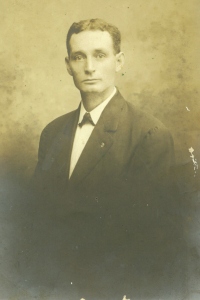Genealogists are accustomed to following the surnames of individuals through past generations, those names providing guideposts from son or daughter to father to grandfather to great-grandfather and so on, until in the depths of history a generation without consistent surnames is reached (see for examples the history of the “Loeb” or “Ragland” names). Less commonly, it is possible to follow forenames – “first names” – along a similar path.

Frances Louise Paysinger
Frances Louise Paysinger was born July 15, 1907, in Pulaski, Giles County, near the southern border of central Tennessee. Her parents Charles and Lola Belle had temporarily returned to the place of their births between residences in Oklahoma and Alabama. As related in a prior post, the family would eventually move from Alabama to Nashville where Frances would spend the rest of her long life. She married Nashville native Ben Fohl Loeb there in 1930.
Frances and Ben had two children, a Ben Fohl Loeb Jr. and a daughter who was named Frances Paysinger Loeb for her mother. However, perhaps to avoid confusion when addressing family members, the children were rarely called by these given names at home, the nicknames “Buster” and “Snooks” applied to the boy and girl respectively. Continue reading
